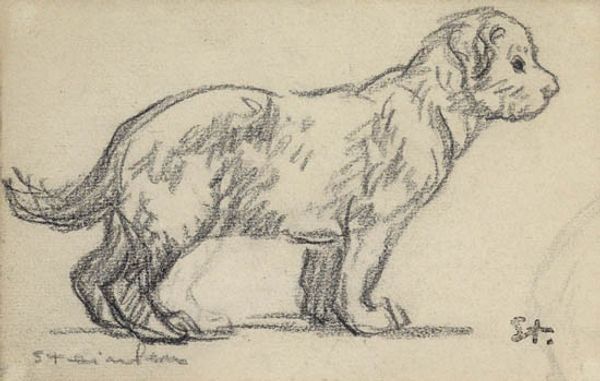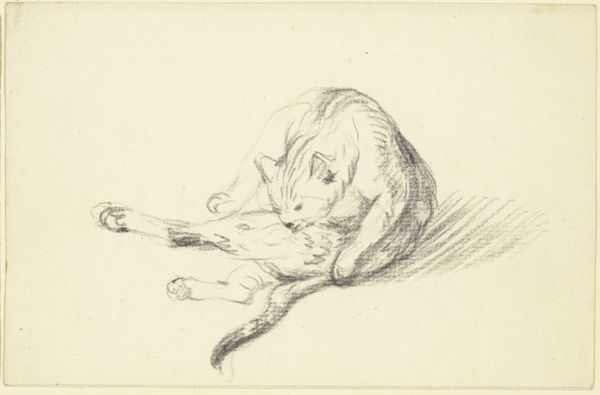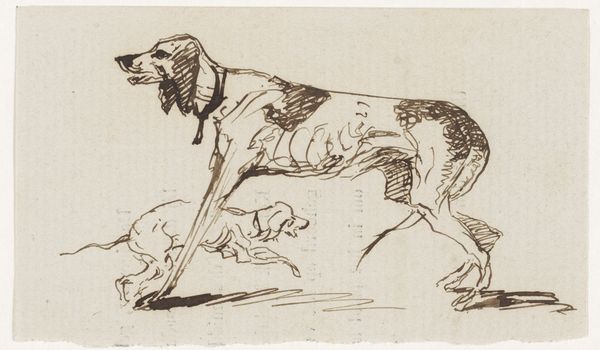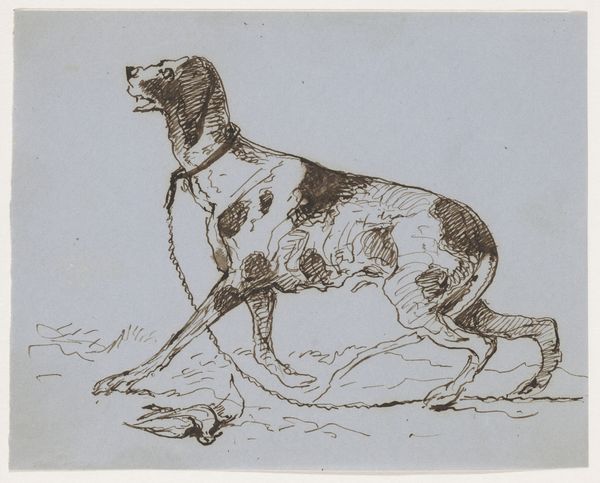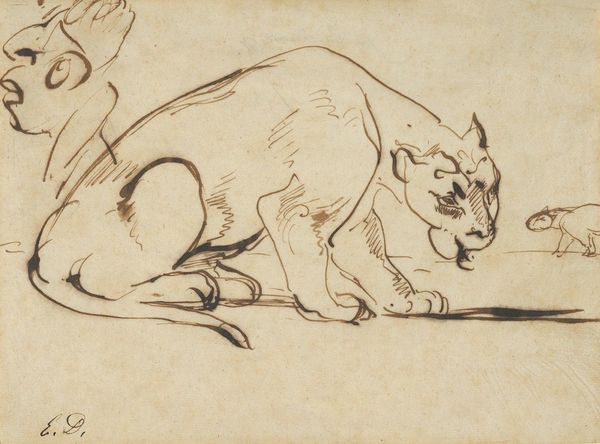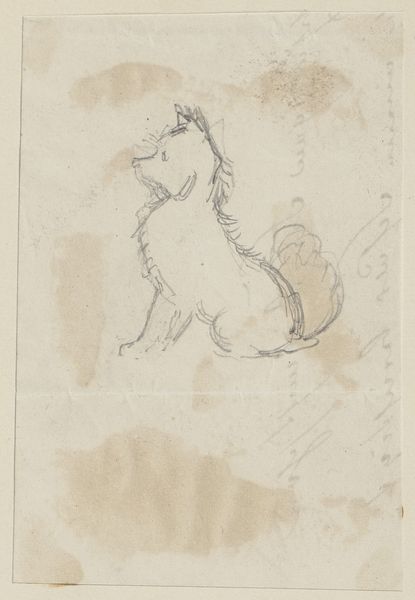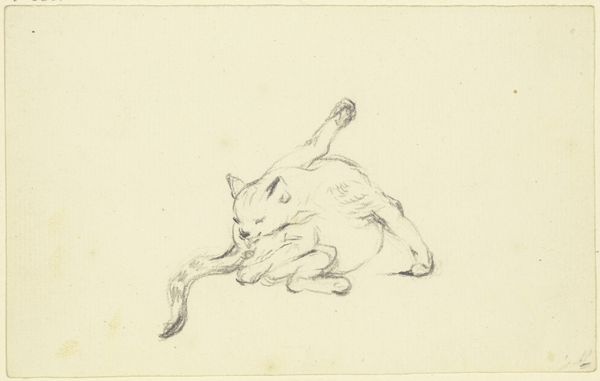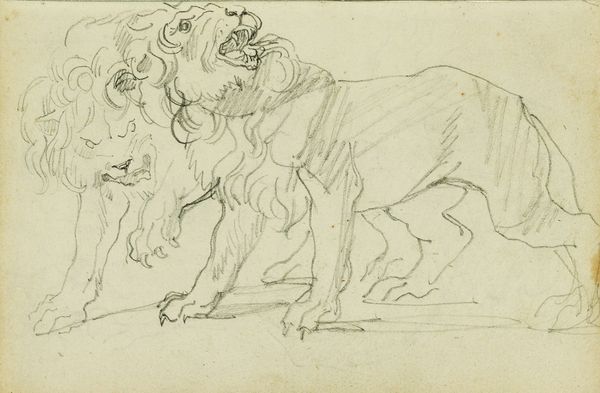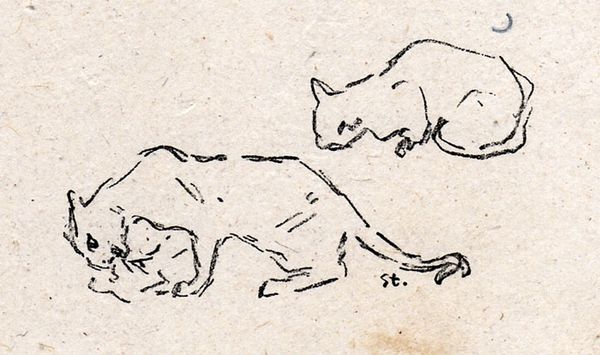
drawing, charcoal
#
drawing
#
imaginative character sketch
#
light pencil work
#
quirky sketch
#
animal
#
dog
#
cartoon sketch
#
figuration
#
personal sketchbook
#
idea generation sketch
#
ink drawing experimentation
#
pen-ink sketch
#
sketchbook drawing
#
charcoal
#
sketchbook art
Dimensions: height 243 mm, width 320 mm
Copyright: Rijks Museum: Open Domain
Editor: So, this is "Etende hond," or "Eating Dog," a charcoal drawing from between 1821 and 1891, by Guillaume Anne van der Brugghen. There's something about its sketch-like quality that makes it feel so immediate and raw. What do you see in this piece that speaks to its cultural or historical context? Curator: Well, the dog itself is an age-old symbol, representing loyalty, fidelity, and guardianship across many cultures. Consider how the act of eating, so primal and necessary, can symbolize dependence, comfort, or even greed, depending on the presentation. Does this image trigger a memory? Perhaps a pet you had? Editor: I had a golden retriever growing up, and this does remind me of her! But the drawing feels…older than that. It's the looseness, I think. Curator: Exactly. This immediacy links it to the tradition of the " живописный этюд", the painterly sketch. These were often informal studies. How might a quickly sketched dog, eternally eating, mirror larger societal ideas about domesticity and control in that period? Is this dog a companion or a symbol of status? Editor: So the simple act of sketching makes us consider deeper cultural ideas? The symbolism is inherent not just in the *what* is depicted but *how* it's depicted, in this case. Curator: Precisely. Van der Brugghen isn't just showing us a dog; he is invoking centuries of cultural meaning associated with the animal, and our interaction with it as viewers reinforces that ongoing symbolic narrative. Editor: That makes me look at seemingly simple sketches in a whole new light! I’ll remember that. Thanks! Curator: My pleasure. I think it’s important to view the symbolism as an accumulation rather than just a moment frozen in time.
Comments
No comments
Be the first to comment and join the conversation on the ultimate creative platform.


